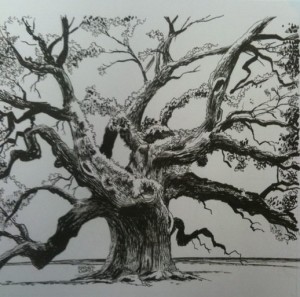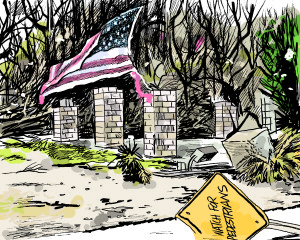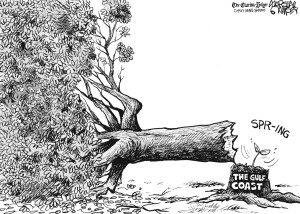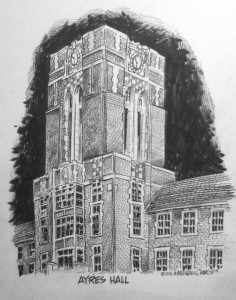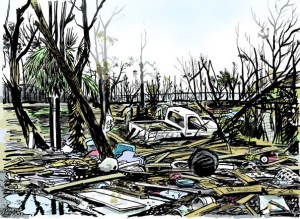The oaks reached to the sky yet at the same time knelt down and touched the sea. Robert St. John and I pulled into Pass Christian that evening for a book signing. The humidity was like syrup. Lights twinkled and children laughed. Boats swayed. The bookstore sat right near the Mississippi Sound, serenaded by the water gently lapping at the shore. As Robert’s truck pulled through town, I marveled at the live oaks and the beautiful homes. They sat on a slight bluff, like the land was tormenting the sea.
A few weeks later, the sea would take its revenge.
The following December, I stood on that same bluff looking at the slab where the bookstore had been. There were no more lights, children laughing or even homes. The live oaks were struggling. The humidity was gone and so were the bugs and the birds. It was tomb quiet. The gray Mississippi Sound lay there with a guilty look on its face.
First of all, I am grateful to Robert for the opportunity for me to join him on that tour. It gave me one of my last chances to see the Gulf Coast like it used to be. But it also allowed me to hear those children laughing.
People ask me, “Why in the hell would people want to rebuild on the Gulf Coast?” It’s a good question. You have insurance costs, flood plain maps, red tape and the stress of the next big storm. Coming back doesn’t seem logical. But the laughter in Pass Christian reminded me of something. It’s the same reason people want to return to New Orleans, Waveband, Gulfport, Biloxi, Pascagoula, Slidell or any other town that got hit hard by the storm.
It’s home. And sometimes, home defies logic.

